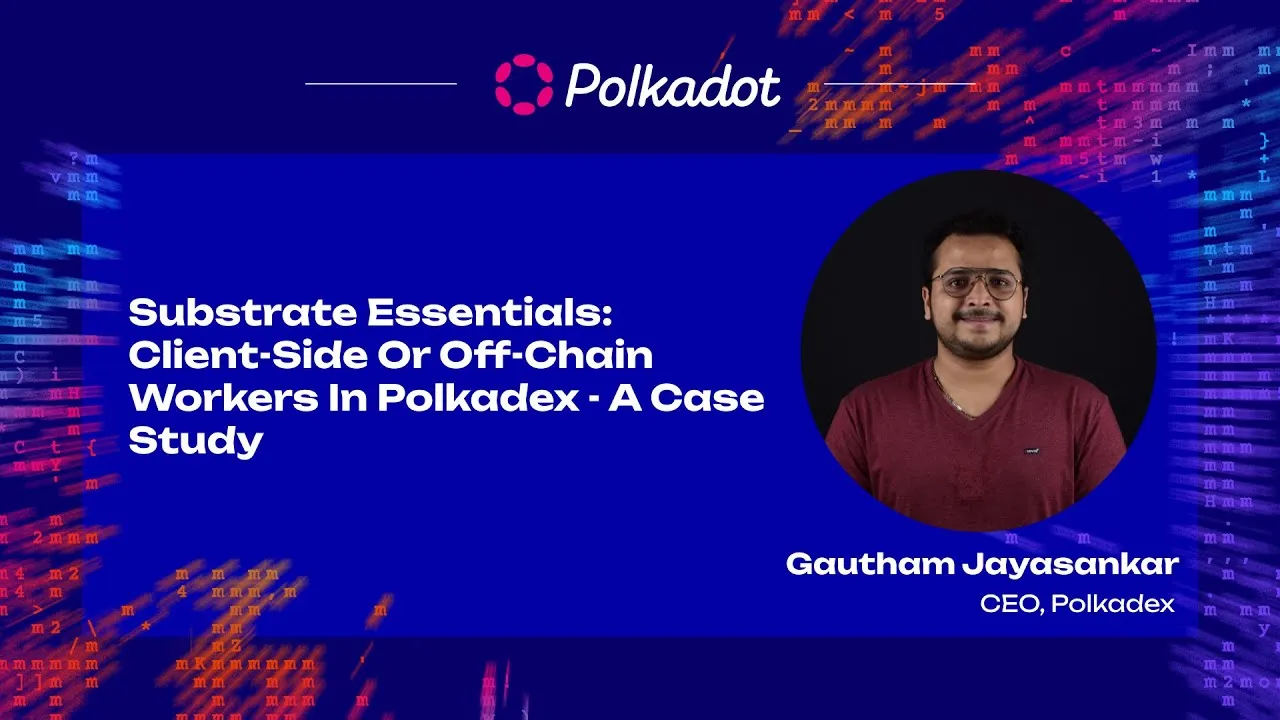In a recent tech talk at Polkadot Sub0 2024 in Bangkok, Asia, Gautham Jayasankar, Co-founder and CEO of Polkadex, delved into the nuanced topic of client-side and off-chain workers within the Substrate framework, using Polkadex’s journey as a case study. This presentation offered deep insights into the challenges and solutions associated with integrating long-running, computationally intensive tasks in a blockchain environment, particularly within the Polkadex ecosystem.
Understanding the Challenge of Polkadex
Developers working with Substrate often focus on runtime development, but Polkadex faced unique challenges requiring solutions beyond standard practices. The core issue was the need for long-running, generic computations essential for Polkadex’s order book functionality, which could not be efficiently handled within the runtime due to speed and resource constraints.
The Limitations of On-Chain Execution
When Polkadex initially implemented its business logic on-chain in 2021, the approach proved to be too slow and costly. The inclusion times ranged from 6 to 12 seconds, and the block capacity could handle only about 1,500 transactions, which was inadequate for a high-frequency trading platform. This necessitated the need for an alternative approach to handle the order matching logic effectively.
Exploring Alternative Solutions
Polkadex considered three main options:
- Sub-Protocol Development: Creating a sub-protocol similar to GRANDPA or Beefy, which, while effective, posed challenges due to insufficient documentation and the complexity involved in developing client-side pallets.
- Off-Chain Workers: Embedding the business logic within off-chain workers, a relatively new but promising approach. This method allowed Polkadex to manage long-running tasks more effectively by decoupling them from the on-chain execution constraints.
- Client-Side Pallets: A more flexible yet challenging approach due to the lack of documentation and the need for significant reverse engineering. Polkadex reverse-engineered protocols like Grandpa and Beefy to understand and implement their client-side pallet for order book management.
Implementing Client-Side Pallets
Despite the difficulties, Polkadex opted to develop client-side pallets, which provided several advantages:
- Ease of Use: Written in pure Rust without heavy reliance on macros, making development straightforward.
- Access to Networking: Enabled the use of standard libraries and provided access to the gossip engine for data propagation across nodes.
- Flexibility: Allowed integration of custom cryptographic keys and network protocols, tailored to Polkadex’s specific requirements.
However, this approach also had its drawbacks, including slower iteration cycles due to the need for validators to upgrade their binaries and the potential for validators to run modified logic, risking system integrity.
Off-Chain Workers: A Viable Alternative
Off-chain workers presented a balanced solution by allowing essential computations to be performed off-chain while ensuring the results were securely validated on-chain. This method provided:
- Fast Iterations: Quicker bug fixes and updates compared to client-side pallets.
- Security Guarantees: Ensured computations were verified by the validator network, providing a trustless validation process.
- Access to External Systems: Enabled HTTP requests and integration with off-chain databases, though it lacked the full networking capabilities of client-side pallets.
Conclusion
For new teams exploring Substrate, Gautham Jayasankar recommends starting with off-chain workers due to their simpler implementation and robust security features. Client-side pallets, while powerful, require more expertise and should be considered only after thorough experimentation with off-chain solutions.
Polkadex’s experience underscores the importance of tailored solutions in blockchain development, advocating for better documentation and community support to harness the full potential of Substrate’s capabilities.








